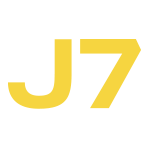Curious to know how to scale your Facebook Ads over $1,000/day? Get our experts' recommendations for free! All our clients went through this step!
How To Make Your 2020 Black Friday A Success Using Facebook
NOTE : In order to provide you with up-to-date information, we’ve included notes throughout the article to help you adapt your Facebook strategy to 2021.
Knowing that Black Friday is the busiest time of year for advertisers, we could not simply recommend to our client that they invest the entirety of their budget during Black Friday weekend. We therefore analyzed the client's efforts over the past year before coming to any conclusions. Here is what we found:
Reaching your audience is twice as expensive during the holiday season.
Indeed, the average CPM between November 1, 2018 and November 21, 2018 was $8.99. Then, when we looked at the period from November 22 to 26, it was $17.89.
Black Friday automatically doubled the cost to reach 1,000 people with a Facebook ad. That's huge!
So, first observation: running Facebook ads during Black Friday costs more than usual, regardless of the audience used.
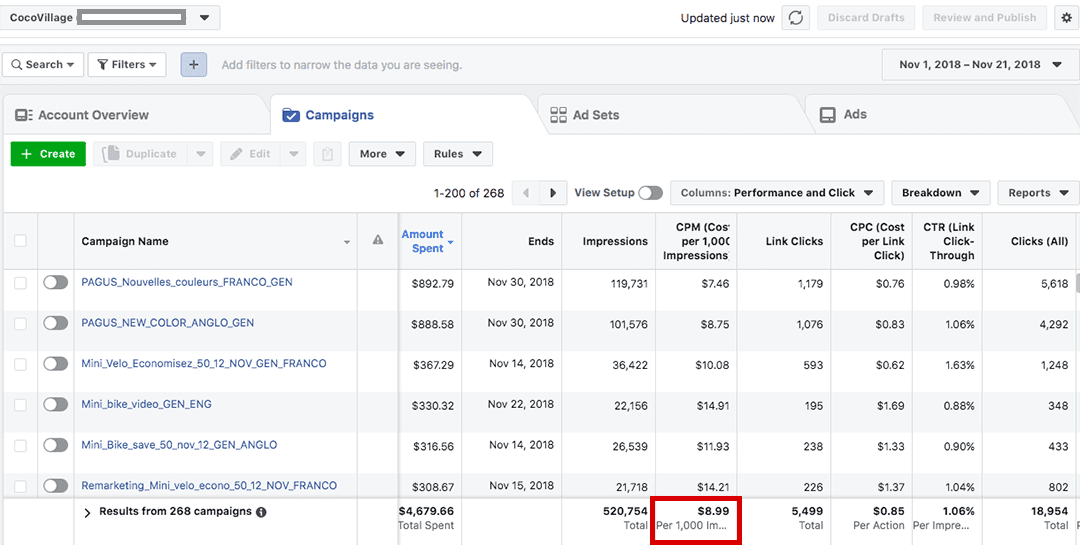
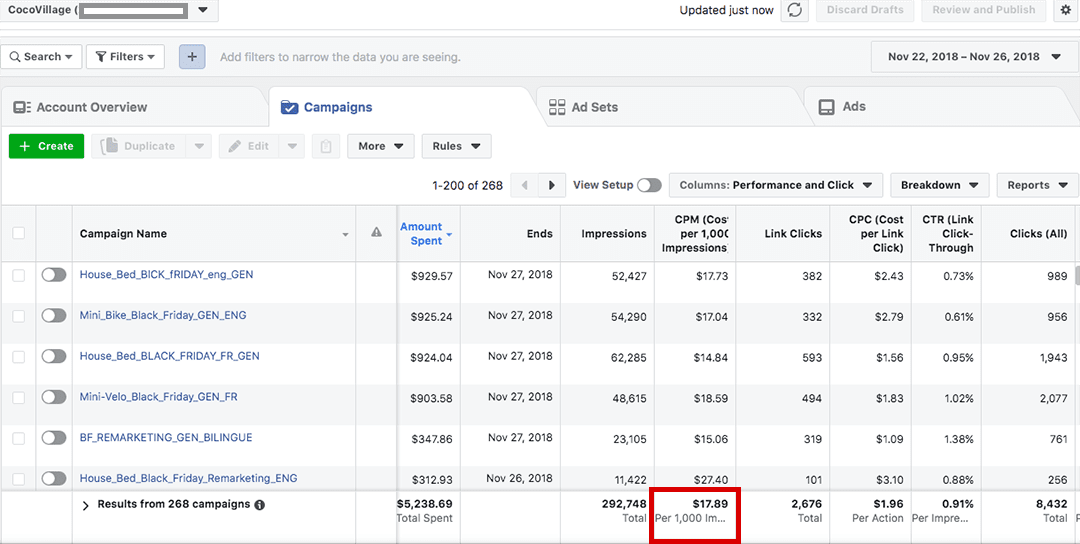
Facebook lets you analyze your conversions after 24 hours, but also after 7 and 28 days following ad delivery. This is interesting for the “Pre-Black Friday” period (November 1 to 26) because a large part of these conversions were not taken into account and attributed immediately, but rather 28 days later.
So much so that the most performant campaign (in ROAS) in November was an email capture campaign. It generated an ROAS of 3.84 over a 28-day window, compared to 1.25 over 24 hours.
NOTE : This is no longer the case today, as the longest attribution windows on Facebook are now 7 day-click and 1-day view. But, that doesn't change the reality of your CPM skyrocketing on Black Friday. To gather data from much longer attribution windows, you can use third-party apps such as Lifetimely for Shopify.
Second observation: The campaigns that we run right before Black Friday have an ROAS that is just as high (sometimes higher) within a larger conversion window.
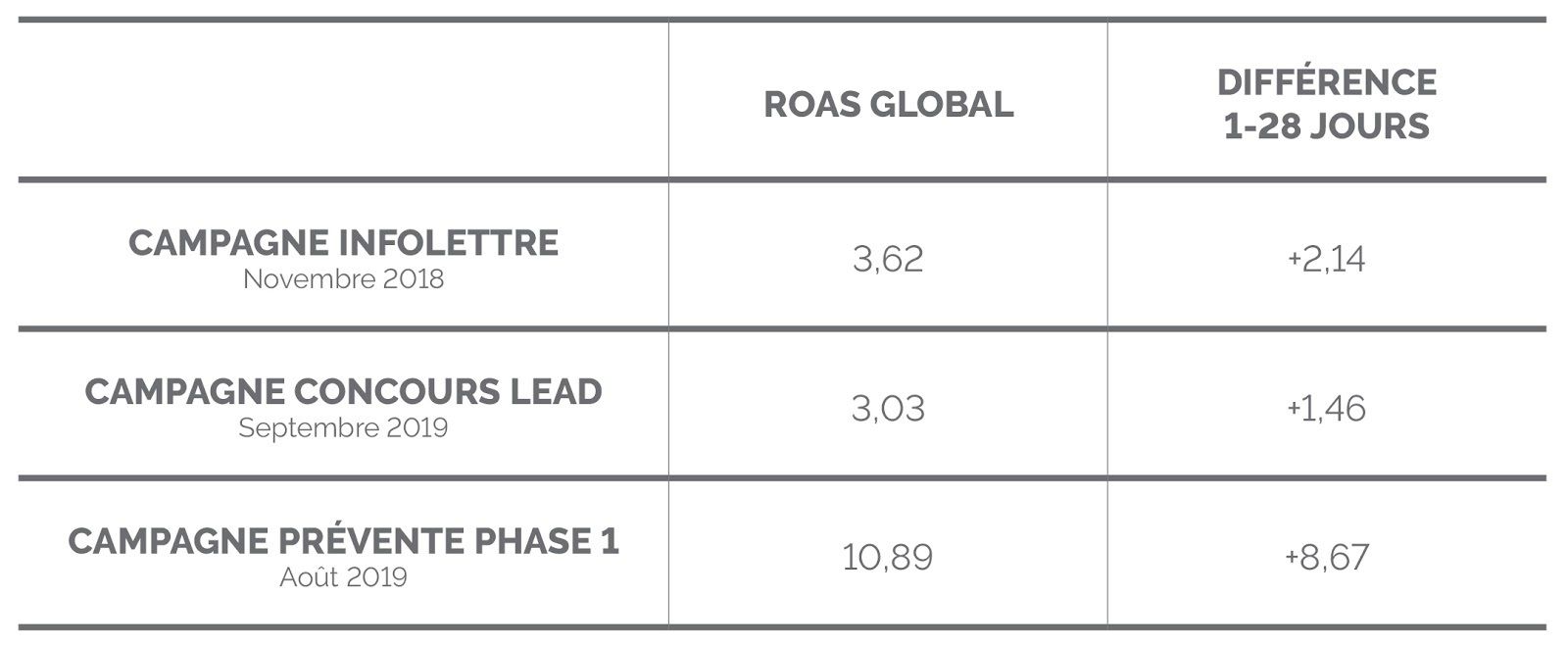
NOTE : Same thing here, by relying solely on Facebook, your ROAS won't increase as much.
With these first two observations in hand, we still had to analyze the audiences. Which was the best audience to use? A warm audience (remarketing) or a cold audience (unfamiliar with Coco Village)?
To answer this question, we compared the current period (September 2019) to that of November 2018.
We quickly realized that the difference was quite impressive. The ROAS when using a warm audience in November 2018 was 4.41 compared to 2.28 with a cold audience.
The ratio was also similar in September 2019, with an ROAS of 6.96 using a warm audience, compared to 1.96 with a cold audience.

Third observation: Reaching a cold audience during Black Friday is much less profitable than reaching a remarketing audience.
With these results, we quickly realized that it was dangerous to invest most of our budget during Black Friday. Indeed, we would need to reach cold audiences (less profitable) and the ad delivery cost would be higher.
We also had to take into account the impact of customer acquisition campaigns launched before this period.
With this clear assessment in hand, we were able to come up with an innovative strategy for the client…
Invest most of the budget before Black Friday!
In doing so, we would be growing our remarketing audiences in the goal of using them specifically during this promotional period, which in turn would allow us to maximize our results.
NOTE : This point is still 100% true and we'll keep following this strategy!
II - Facebook Ads Strategy for Black Friday
Here is the media proposal that we made to our client so that they could be as prepared as possible for Black Friday.
A/ Strategy from November 1 to 27
As previously explained, our goal was to “fill” our warm audiences (View Content, Engagement, Add to Cart, Checkout, etc.) as much as possible and at a low cost in preparation for Black Friday.
That’s why we focused on two very distinct campaign objectives:
- Optimized conversion to View Content (49% of the budget)
- Optimized conversion to Lead (51% of the budget)
View Content
Unlike carousels, our videos and images do not lead directly to a product. We need to optimize on the actual viewing of a product; that’s why the objective selected is View Content and not Traffic (optimized for landing page view).
Advertising message: Looking for the perfect birthday or holiday gift?
Note : This campaign should be replaced by a Video View and/or Instant Experience campaign. This way, you'll be able maximize interactions on the platform and further qualify your cold audience for retargeting. View Content campaigns rely too much on the Facebook Pixel, which we try to avoid.
Lead
Online sales are not limited to Facebook. More and more, email marketing comes into play to trigger a purchase. That’s why we created a VIP list that offered its subscribers access to Black Friday promotions before everyone else. This lead is therefore twice as valuable as an opt-in competition. The person has signed-up to buy our products and expects to receive promotional emails.
Advertising message: Take advantage of our Black Friday discounts 48 hours before everyone else.
Note : In order to maximize the chances of acquiring leads at a low cost, we also use Lead Ad campaigns. This way, the user doesn’t have to leave the platform to convert.
Audience
In terms of audience, each time we had:
- A lookalike audience based on purchases made on the website.
- Two interest-based cold audiences.
- A warm audience (Engagement with Facebook/Instagram Page, View Content, and Add to Cart in the past 30 days) used at certain times.
Of course, the cold audiences all excluded visitors/buyers from the past 180 days.
Most importantly, towards the end of this period, we set up a Lead countdown campaign to alert our warm audience that the VIP list was about to close.
B/ Strategy from November 28 to December 2
Starting on November 28 (Friday), we launched our Conversion ads optimized for Purchase, as we had warm audiences that were large enough for Facebook to optimize.
Our audiences were as follows:
Level One (L1)
Lead - 180 days (12K)- Page View - 180 days (100K)
- Engagement with Facebook/Instagram page - 180 days (230K)
- Level Two (L2): View Content - 180 days (72K)
- Level Three (L3): Add to Cart - 180 days (8K)
- Level Four (L4): Purchase - 180 days (> 1K)
Note: This year, we’ll add the following to N1
- Leads from the Lead Ad campaign
- Viewers from our video-based campaigns
- Prospects who interact with our Instant Experience campaigns
L1 audiences were used in our “TOF” (top-of-funnel) campaigns, which are normally customer acquisition campaigns.
L2, L3 and L4 audiences were used for Catalog DPA, each with their own specific advertising message.
We excluded buyers from all audiences, except for L4 of course.
In terms of advertising messages, we had:
- a message for Friday: Black Friday has arrived!
- a message for the weekend: Black Friday continues! Two more days to take advantage of 60% off.
That way, we had more ads to constantly revive Facebook’s interest in delivery.
For Cyber Monday, we kept the same audience and campaign approach. Only the visuals and advertising messages have changed (see Part III. Creation).
The message became: Cyber Monday is in full swing!
C / Offers
VIP List Offer
We begin with the VIP offer because it takes place before the official start of Black Friday. By signing up to our VIP List, prospects get early access 48 hours before other shoppers.
All products are 60% off by using a promotional code. We couldn’t display the discounted prices as we still had cold traffic visiting the website.
We then offered free shipping on orders over $100.
Global Black Friday Offer
Black Friday was simple: all of our products were 60% off.
It was very important for us to have such an offer because, by having a discount that is applicable across the entire store, we’re offering "no compromise” shopping.
If we had only one product per category on sale, we would have held back on ads and we could not have benefited from the full power of Facebook (especially with DPA).
III - Facebook Ads Creation
A/ Email Collection Facebook Campaigns
Here are the 3 ads used on our cold audiences to feed the VIP list.
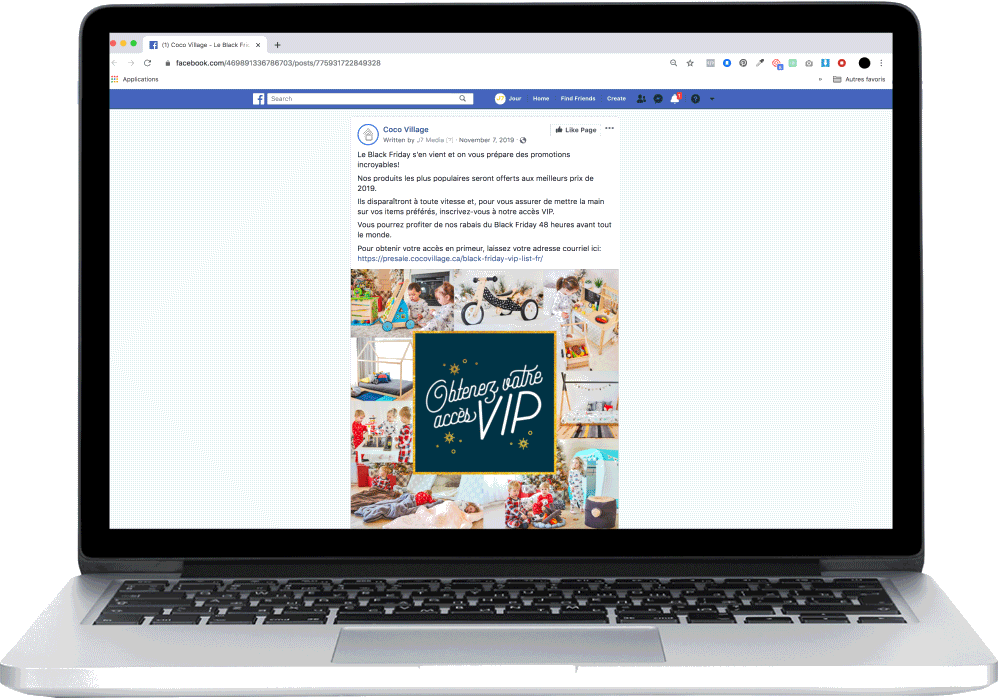
B/ Audience Warm-Up Facebook Campaigns
To warm up our future Black Friday audiences, we used almost two ads per product type (e.g. bicycle, bed, sleeping bag, etc.). We often used the carousel/animation duo, so that Facebook always had two elements to test per audience.
Here are some examples:
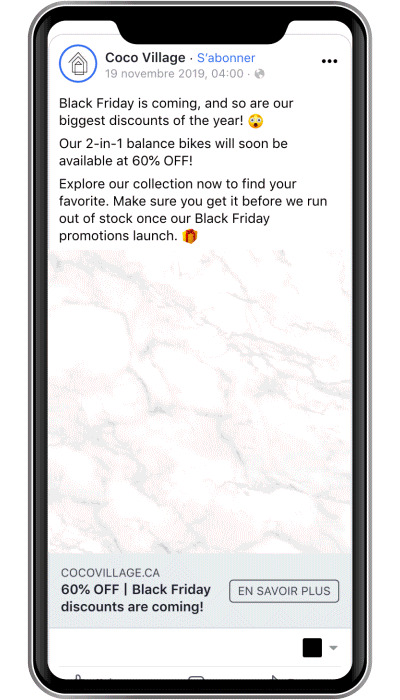
C/ Black Friday “Countdown” Facebook Campaign
With our warm audience (visitors who have not yet converted to the VIP list), we used "countdown" ads to create a sense of urgency. As a reminder, VIP list subscribers benefitted from 48 hours early access and 60% off before Black Friday.
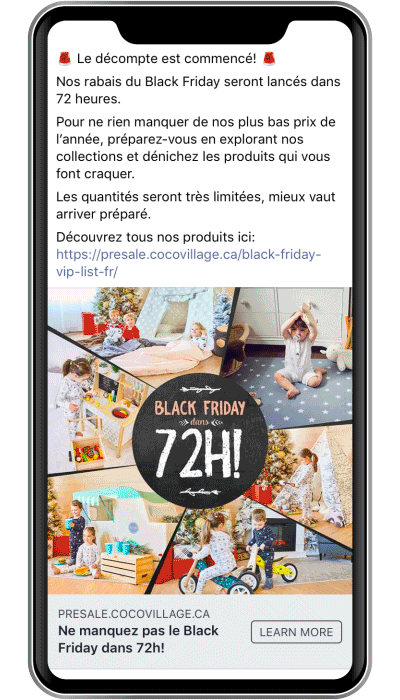
D/ Black Friday Facebook Campaigns (VIP List)
48 hours before the official start of Black Friday, we launched it for our VIP list with a dedicated promo code targeting all Leads from the past 60 days.
Here are the ads:
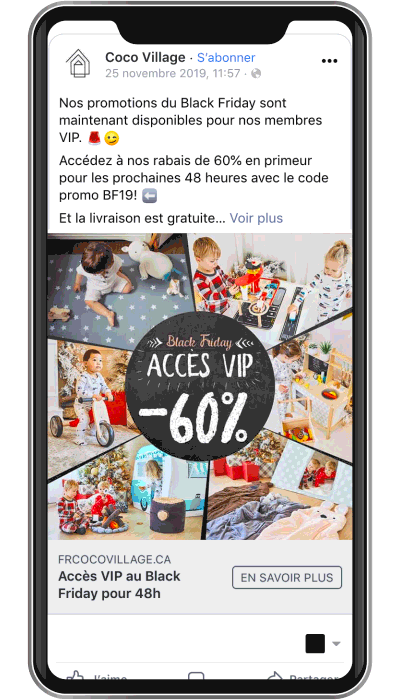
E/ Black Friday Facebook Campaigns (global)
Here is the integration that we set up for the official Black Friday:
- A campaign by product type
- A purchase objective
- A campaign-level budget (CBO)
- Three warm audiences: 180-day engagement with the Facebook/Instagram page, 180-day Page View, and 180-day Lead
- A cold "Joker" audience in case we needed more traffic over the weekend
- 4 ads (carousel and image) with a hook for the start of Black Friday and another one for the weekend
Here is an example for beds:
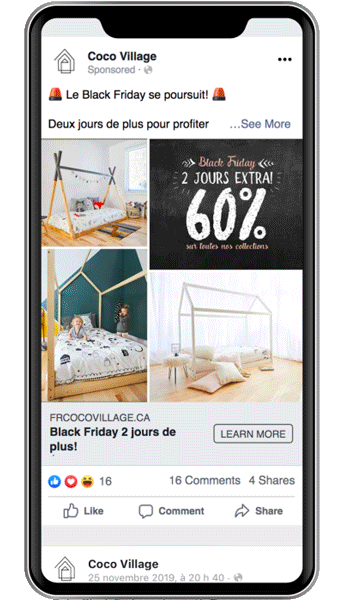
Having that many campaigns allowed us to quickly detect the best ones and to adjust our budget by taking from the ones that were not performing as well.
We also had a global campaign that featured all products.
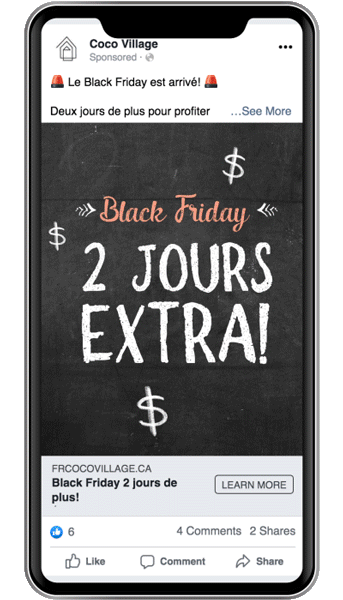
In terms of retargeting, we only used DPA for 3 campaigns:
- View Content - 180 days (excluding Add to Cart)
- Add to Cart - 180 days (excluding purchases)
- Buyers - 180 days
Each ad (Carousel/Collection) had dedicated copy for each stage. Here is the latest version of our collection ad, used on the last day of the promotion:
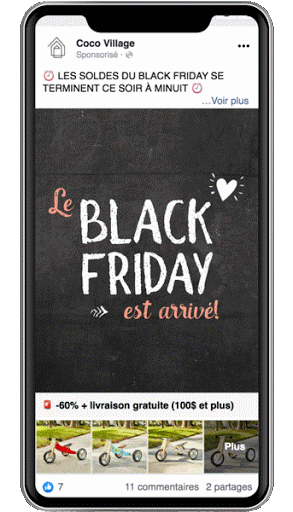
F/ Cyber Monday Facebook Campaigns
Once Black Friday was over (November 30), we automatically launched our Cyber Monday campaigns.
We maintained the same campaign organization as before.
Here are some examples of the ads that we created:
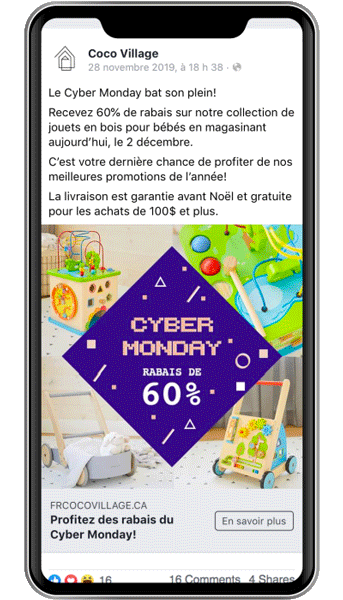
You will notice a difference in design between all the ads displayed from Pre-Black Friday all the way through to Cyber Monday. By doing so, we always had a fresh new look to offer our prospects.
For the retargeting DPA:
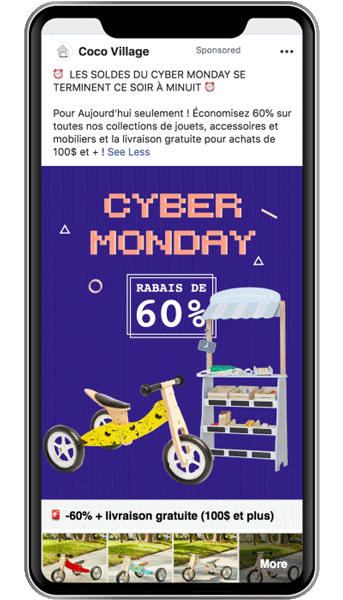
IV - Black Friday Results
A/ Email Marketing
During Black Friday, we were able to collect more than 7,700 leads at a cost of $3.69 each.
On Facebook alone, we managed to get $150K in attributed revenue with an ROAS of 5.12.
On our email marketing platform, this number increases to more than $303,000 for November alone, with about 30 emails sent to 3 different communities.
B/ Facebook Sales
Here are the results that we achieved with the Black Friday/Cyber Monday campaigns.
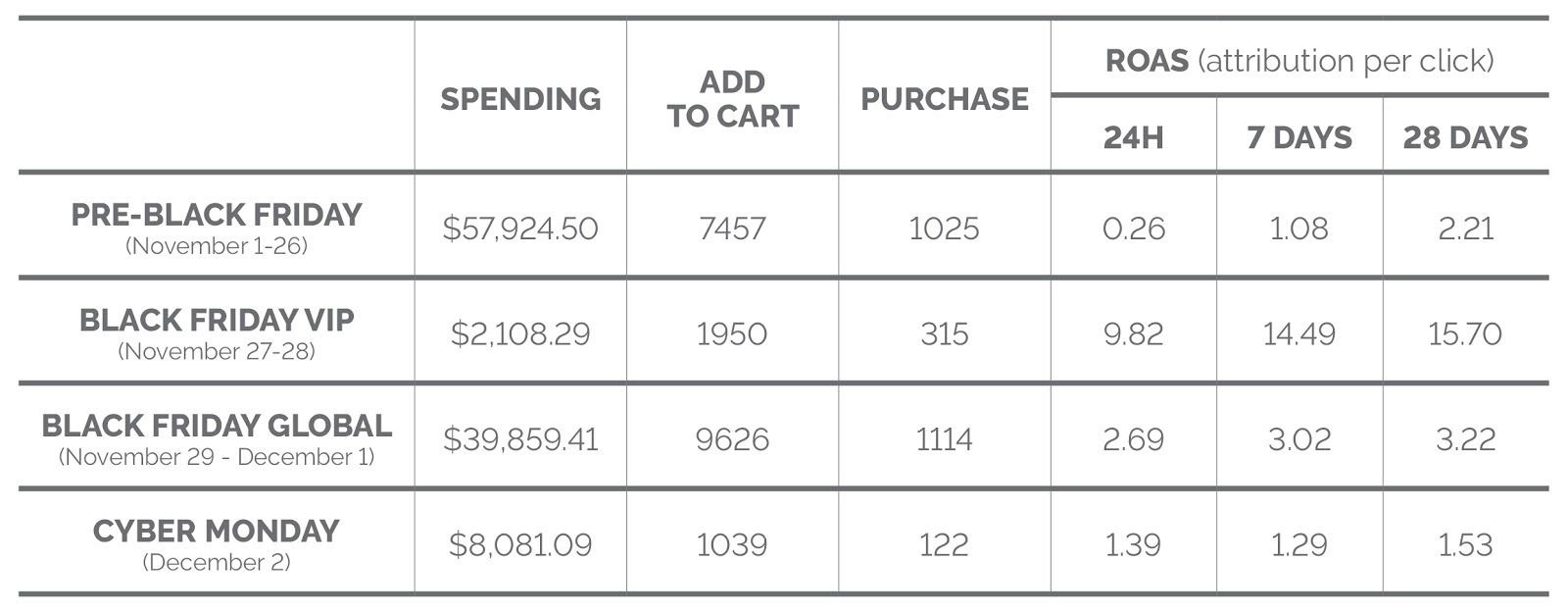
All ROAS after 28 days are higher than those analyzed on the same day. It’s also interesting to note and to confirm that the campaigns that we ran prior to Black Friday ended up being totally profitable!
Note : You will no longer generate such an increase in results (due to the new attribution windows), so you will have to make do with your internal numbers and/or third party tracking/ attribution software as mentioned above.
Key Takeaways
Here’s what we can take away from this case study for Black Friday/Cyber Monday with Facebook:
- Warm-up your audiences one month in advance, as cold traffic will cost you more once Black Friday has started.
- Collect email addresses by using VIP lists. This allows you to add a customer acquisition channel, as well as to get your prospects ready to make a purchase.
- Come up with an offer that is hard to ignore and that is applicable across your entire store.
- Use the tools that Facebook recommends in the POWER5, namely: DPA, automatic placements, broad/lookalike audiences (for the warm-up phase) and campaign budget optimization.
